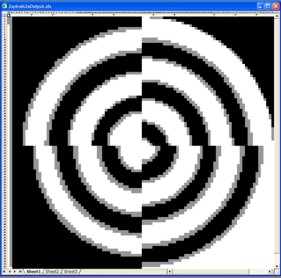|
A Layman’s Guide to Artificial Intelligence Part One:
Introduction to Neural Networks.
If you’re an executive, making software purchasing decisions, you may have been asked to evaluate an artificial intelligence solution for your business. (This would be especially true if you’re one of my clients.) This paper is intended to be briefing on the current state of this art, and to separate fact from science fiction regarding a topic that is much more often discussed than it is understood. READ MORE>
NN.MDB The Database that Thinks
In short, I have created real, working Artificial Intelligence using nothing but an off-the-shelf database program. This is, I believe, the world's only Neural Network Simulator native to Microsoft Access. It is a fully functional three-layer perceptron comprised entirely of VBA subs and functions, Access tables, and SQL queries. READ MORE>
  The Two Spirals Problem: Solved The Two Spirals Problem: Solved
Using a simple four-layer MLP and standard backprop (You're going to say I cheated.)
While the Two-Spirals Problem may be (or actually, may not be) a valuable benchmark for neural network researchers working on new architectures, I believe that it much more valuable, and to a much larger number of people (those working on applied NN solutions), as an example of the wrong way to present data to a neural network. This paper is intended as a primer on how to evaluate, and manipulate, your dataset prior to building a neural network to improve or even guarantee your results. READ MORE>
 Directional Movement Indicators using n Range Directional Movement Indicators using n Range
Directional Movement Indicators (DI+ and DI-) have long been established as an effective means of determining whether the price change of a given security is trending in one direction or another. These indicators are created by summing up the intraday movement of a stock across a period of several days. READ MORE>
 An Analysis of Directional Movement as a Complex System An Analysis of Directional Movement as a Complex System
Continuing on my work in the recent white paper, Directional Movement Indicators using n Range We had discovered that using a range of n values, we could generate much earlier and better signals than we could with any particular value of n. We also discovered that with minor variations in the parameters of our signal-generator we could make these signals happen earlier and earlier, even to the point of being able to predate (or perhaps predict) a trend by two or three days. Unfortunately, while we could create almost any set of signals we wanted in a given period, elsewhere in that dataset, we were generating other signals that were not as good, and many that were downright wrong. READ MORE>
|